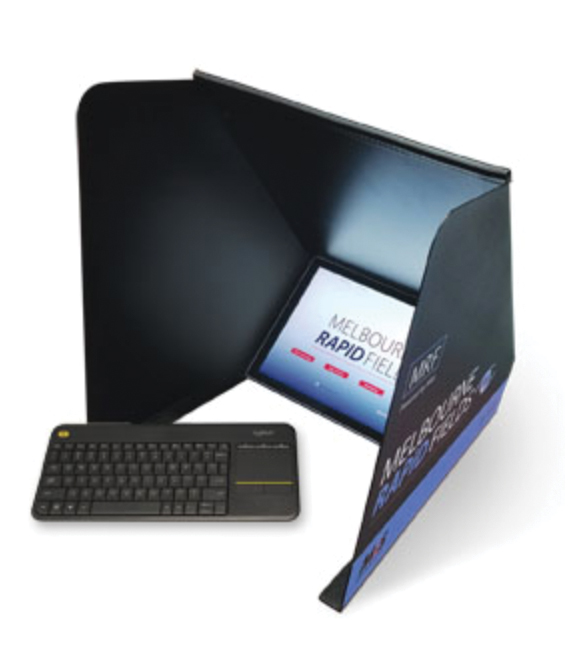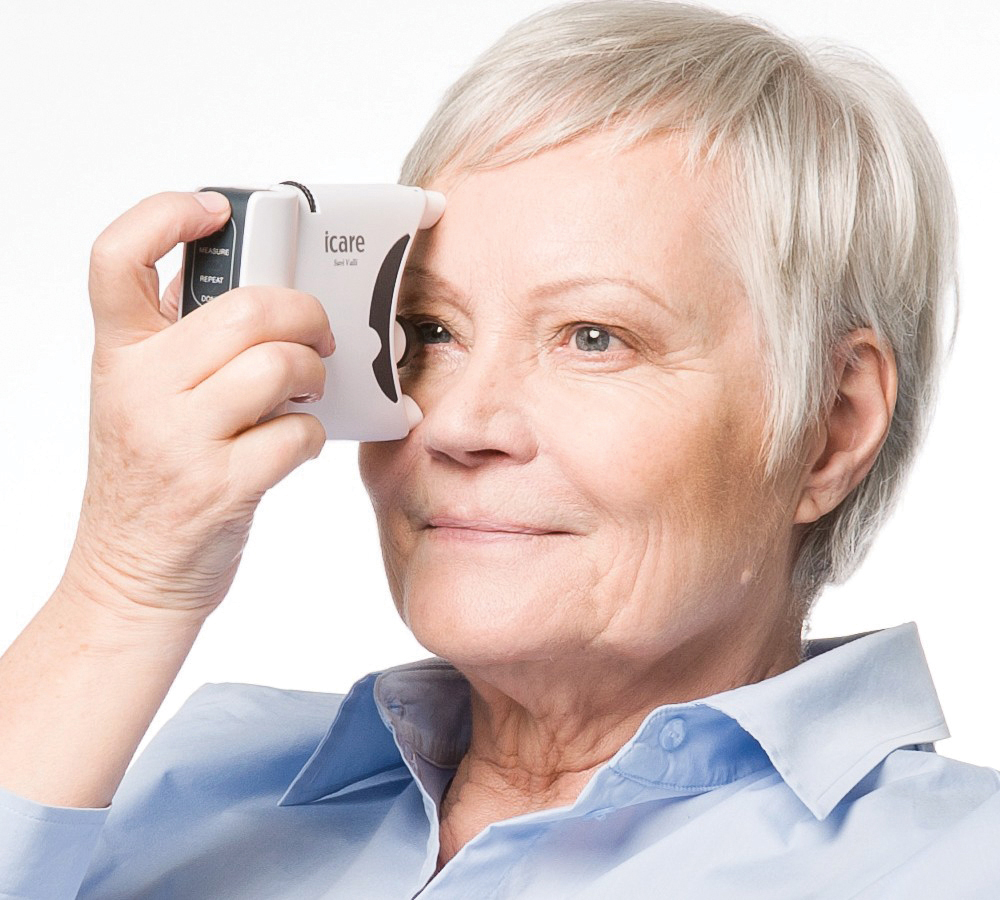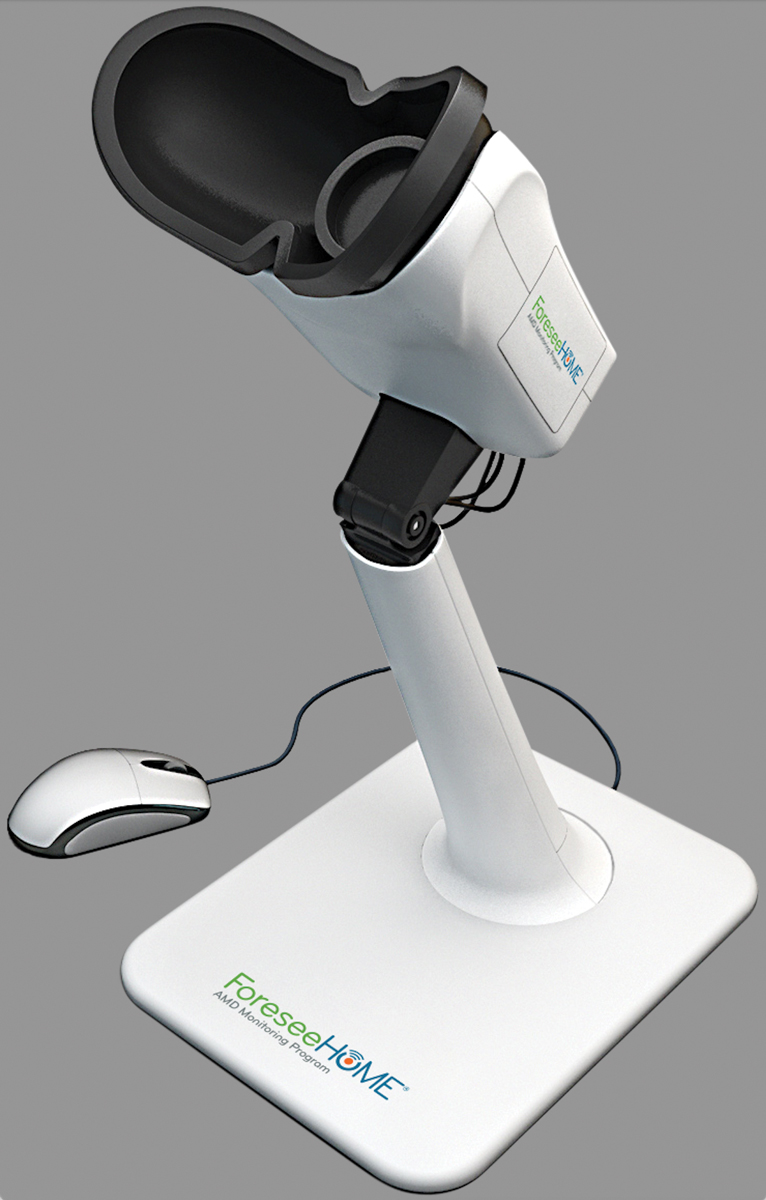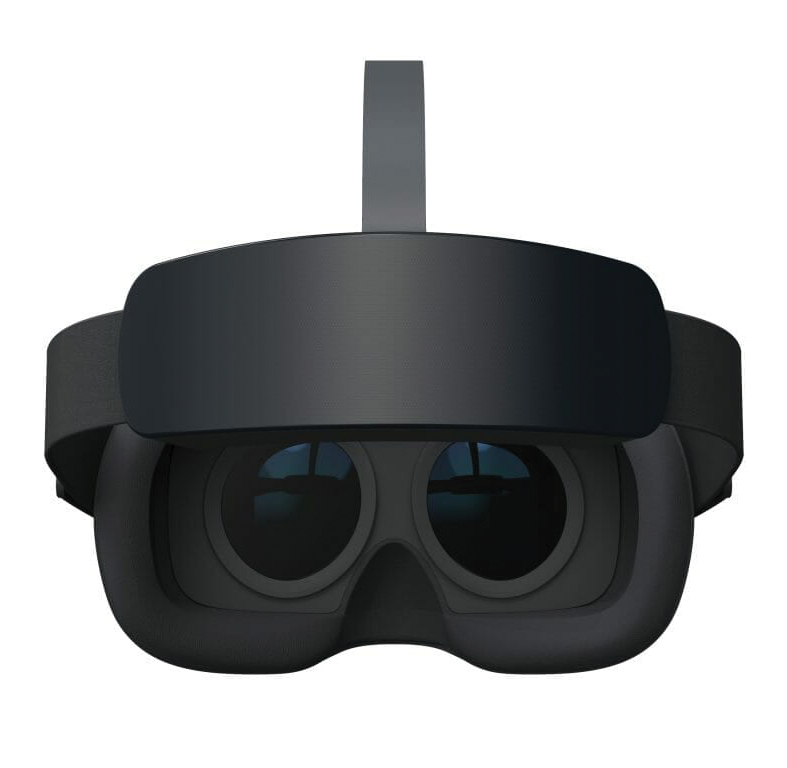While at-home monitoring is not a new concept in medicine—or optometry—recent years have seen an increasing interest in this technology and its role in patient care. This growing trend gained even more momentum during the COVID-19 pandemic with a change in how providers and patients both think about medical care.
“This shift toward more remote care is the future,” notes Mohammad Rafieetary, OD, of the Charles Retina Institute in Memphis. “We will continue to see the expansion of telemedicine, and it is imperative that optometrists embrace new ways to provide care, including at-home diagnostic tools.” And although incorporating these technologies into practice is not always simple, optometrists are in the position to take the lead when it comes to using these tools to enhance their approach to patient care.
So, how do ODs go about integrating these devices? It begins with a comprehensive understanding of what is available and how these tools can complement the care that is already available.
 |
|
Melbourne Rapid Fields allow ODs to monitor patients between office visits. Photo: M&S Technologies. Click image to enlarge. |
Current Diagnostic Tools
There are a number of at-home diagnostic tools currently on the market and several others still in development. These devices can offer optometrists a way to improve the care they provide to patients with chronic conditions—such as moderately advanced glaucoma, intermediate age-related macular degeneration (AMD) and diabetic retinopathy—who could benefit from closer monitoring.
Glaucoma. The ability to more frequently evaluate patients with this chronic condition ensures ODs can adjust treatment plans quickly and avoid unnecessary complications. For instance, it often requires several visual field tests to see subtle changes in a patient, according to Southern College of Optometry’s Paul Harris, OD. And so, depending on the frequency of office visits, it can take months to determine if the treatment plan needs adjustment.
With Melbourne Rapid Fields (M&S Technologies), a web-based visual field testing system, ODs can now monitor their patients between office visits. Dr. Harris, who has been involved in the testing of this device, notes that this system is an effective at-home option. “I’m highly impressed with the ability of the Melbourne Rapid Fields to do 24-2, 30-2 and 10-2,” he says. “At-home monitoring is not only convenient for the patient, but also allows for more frequent progression analyses.”
When starting a patient on this device, Dr. Harris and colleagues conduct the first test in the office to help patients understand correct usage. Then, they will have patients use the system once a week for the first month. This provides enough data for effective progression analyses moving forward. Following the first month, patients are advised to test once a month for two months and then once every three months after that.
The OD is notified whenever a patient uses the device, allowing them to review the data and determine if further action is necessary. This may require a patient to up their frequency of use or schedule an office visit for further evaluation, according to Dr. Harris.
 |
|
The iCare Home uses rebound tonometry to obtain IOP measurements. Photo: CenterVue. Click image to enlarge. |
“This tool does not supplant office visits or the role of the optometrist,” he emphasizes. “What this system actually does is increase the diagnostic skill of the eye care professional as well as the timeliness of intervention.”
Another notable visual field analyzer intended for home use is the VisuAll (OllEyes), a virtual reality headset with models available for office or home use. The device is capable of administering all common testing protocols (e.g., 24-2, 10-2, 30-2), according to the company. Testing time is about three minutes for threshold fields.
A different sort of device for glaucoma patients to use at home is Triggerfish (Sensimed)—a smart contact lens that continuously measures and records ocular changes correlated with intraocular pressure (IOP). The FDA granted market clearance in March 2016 for this device, which includes an antenna that wirelessly transfers data from the lens to a portable recording device. The resulting data provides the time of day the eye’s volume is highest and lowest. It is important to note that the device does not directly measure IOP.
The ongoing measurement of IOP—a significant modifiable risk factor for glaucoma progression—is a critical aspect of disease management. However, measuring IOP in-office cannot always capture daily fluctuations and patterns. At-home IOP measurement tools, such as the iCare Home tonometer (CenterVue), could provide valuable data for providers. Patients self-administer the test and data is sent to a cloud server accessible by the doctor for evaluation.
AMD. At-home monitoring has been a part of AMD management for decades in the form of the humble Amsler grid, which may help detect progression of dry AMD to the wet form of the disease when it is still in a treatable stage. However, it has some shortcomings, including patient adherence. With recent technological developments, there are now more advanced options that allow optometrists to monitor these patients for even the smallest changes.
The Foresee Home (NotalVision) device is a simple test that can identify the signs of progression. “I’ve been prescribing Foresee Home since it became FDA-approved,” notes Joseph Pizzimenti, OD, of the Rosenberg School of Optometry. “It has been nothing short of a game-changer for identifying functional change due to new choroidal neovascularization in AMD. The result has been earlier detection, earlier treatment, better visual function and enhanced quality of life. In my opinion, there are no drawbacks to using this device.”
 |
|
The Foresee Home helps identify AMD progression. Photo: Notal VIsionClick image to enlarge. |
For best results, Dr. Rafieetary recommends daily use. However, he acknowledges that may be challenging for some patients. “In those cases, I will advise that they use the device every other day or at least a few times per week.”
Typically, candidates for this device have intermediate AMD, explains Dr. Rafieetary. “Changes should not be rapid, but rather occur slowly over time,” he says. “The device alerts us to any changes in the map. At that point, we will decide next steps, such as further testing to determine if their disease has progressed.”
Patients who have progressed to advanced AMD no longer need to use Foresee. However, if progression has only occurred in one eye, ongoing use of the device for the eye that remains in the intermediate stage can still be useful, notes Dr. Rafieetary.
Given new technologies such as Foresee Home, is the Amsler grid still valuable? According to Dr. Rafieetary, there is still a role for this tool in AMD management as both a complement to newer technologies as well as an option for patients who may not be able to adhere to or afford more advanced devices. For improved detection and outcomes, consider objective means such as the Foresee Home and subjective means such as the Amsler grid, suggests Dr. Rafieetary.
Another area of AMD management where at-home devices are being explored is in optical coherence tomography (OCT). One such device currently under development is the Notal Home OCT (NotalVision), an artificial intelligence-enabled tool that monitors neovascular AMD. After each use by the patient, the device uses a machine-learning algorithm to scan for retinal fluid; if it’s present, a report is generated and sent to the doctor.
This tool is another way to enhance our overall disease management strategy, says Dr. Rafieetary. “At this point, at-home OCT is only intended and being developed for better management of wet AMD patients undergoing treatment,” he explains. “However, application of these devices can expand to other conditions such as diabetic retinopathy.”
There are potential drawbacks to consider, he acknowledges, including cost and quality of image resolution. Nevertheless, he says the technology shows promise. These challenges will be addressed as technology continues to advance and it is important that ODs remain up to date on ongoing research and developmental efforts, according to Dr. Rafieetary.
 |
|
The VisuAll headset for field testing comes in models for office and home use. Photo: OllEyes. Click image to enlarge. |
Patient Education & Adherence
An important—yet often challenging—aspect of at-home diagnostics is patient adherence. The effectiveness of any device depends on consistent and correct use. To ensure patients are adequately prepared, ODs must provide comprehensive education and support.
This begins with a thorough explanation of the at-home device, including its purpose, expectations and proper use. “The best way to get started is in the exam room with clear and succinct patient education,” says Dr. Pizzimenti. “Let the patient know that you are prescribing this method of at-home testing and explain why.”
To encourage adherence, he emphasizes the important role these devices can play and the benefits for ocular health and overall well-being. “I stress to the patient that closer monitoring can save vision and enhance the quality of their life,” notes Dr. Pizzimenti.
Will At-Home Refraction Ever Make the Grade?Another element of at-home diagnostics is the concept of online vision screenings. Over the last several years we have seen an influx of apps that offer patients a way to renew their prescription without a trip to the eye doctor. Most recently, Warby Parker expanded its virtual eye exam offerings to include an updated app called Virtual Vision Test that allows users to use their iPhone to renew their glasses and contact lens prescriptions remotely. “COVID-19 has served as a tailwind, and many optometrists who once denounced telemedicine technologies are now embracing them,” notes Brian Chou, OD, of San Diego. “This shift has opened the door for online companies to introduce online sight testing to an industry that is now warmer to the idea.” Dr. Chou anticipates ongoing development in this space, making it easier for consumers to renew their prescriptions. And the logical assumption, he notes, is that more consumers will delay or opt out of in-person exams as a result. The danger of optimizing for at-home convenience is if it comes at the expense of quality and what is best for patients. This is a real concern with significant implications that must be addressed, but ODs can position themselves for success and continue to provide care that is critical to a patient’s overall ocular health and well-being. “As a profession, we must accept that online prescription renewal is here to stay,” Dr. Chou says. “So, it is up to us to continue to advocate for our patients as well as the field of optometry. ODs can and will continue to play an important role in eye care.” |
When Dr. Rafieetary introduces the Foresee Home to his AMD patients, he starts by explaining the intent behind the device. “You want your patient to have the right expectations and understand why this device is a beneficial addition to their management plan,” he notes. “Take the time to walk your patient through the process and rely on the support the industry provides for further patient education.”
As with any aspect of care, it is important to recognize the unique needs of your patients, suggests Dr. Harris. “Patient adherence is an issue across the entire medical field,” he notes. “Success depends on spending time with your patients, listening to their needs and concerns and getting to know them as a human being.”
ODs must also be prepared—when necessary—to change their approach. If, despite ongoing education and support, a patient cannot consistently adhere to using an at-home diagnostic tool, the optometrist may need to opt for more frequent office visits instead. As with any protocol, one size does not fit all and not every patient is the right candidate for at-home diagnostics.
Key Considerations
There are several considerations for the optometrist who wants to integrate these devices into their practice, including insurance coverage as well as legal and privacy concerns.
“Providers who are working with these devices and associated software need to ensure they are fully HIPAA-compliant,” says Dr. Harris. “All data must be encrypted end-to-end.”
Insurance coverage and reimbursement depends on the device. For instance, the Foresee home is covered by Medicare, notes Dr. Pizzimenti, who only bills for in-office visits.
As technology continues to advance, there are concerns that home-based devices could undermine the value of in-office care; however, that doesn’t have to be the case. In fact, as the primary providers of eye care, ODs are in the position to integrate these tools into the foundation of their practice, ensuring that their patients receive timely and effective interventions.
“At-home diagnostics should complement what we already do for our patients, not compete with it,” emphasizes Dr. Rafieetary. “There’s no question that the growth of these devices is going to continue. If we become early adopters, then we can not only inform our patients, but also become better providers of care.”

